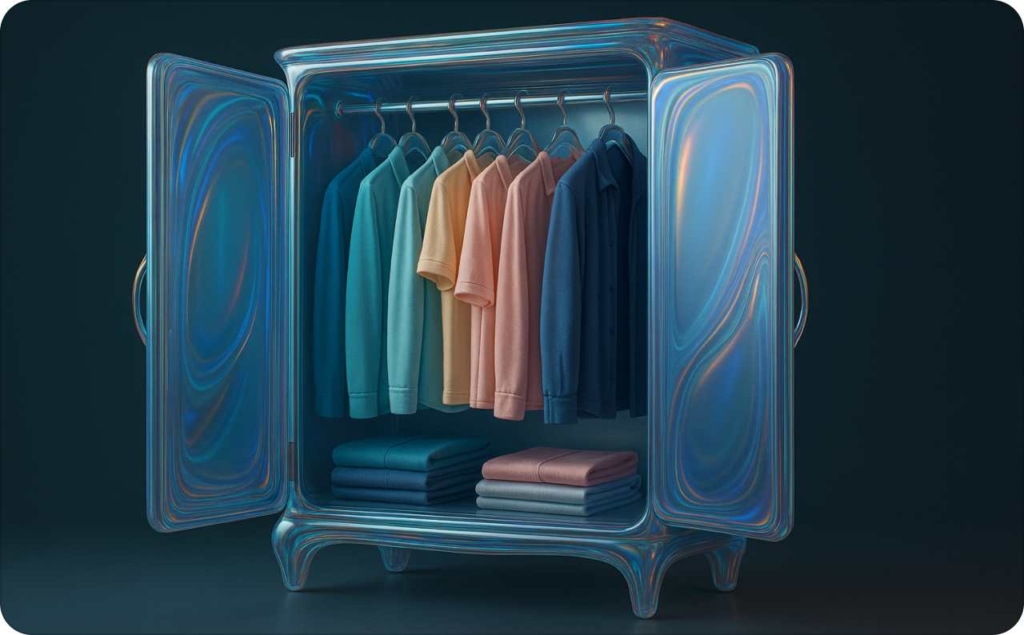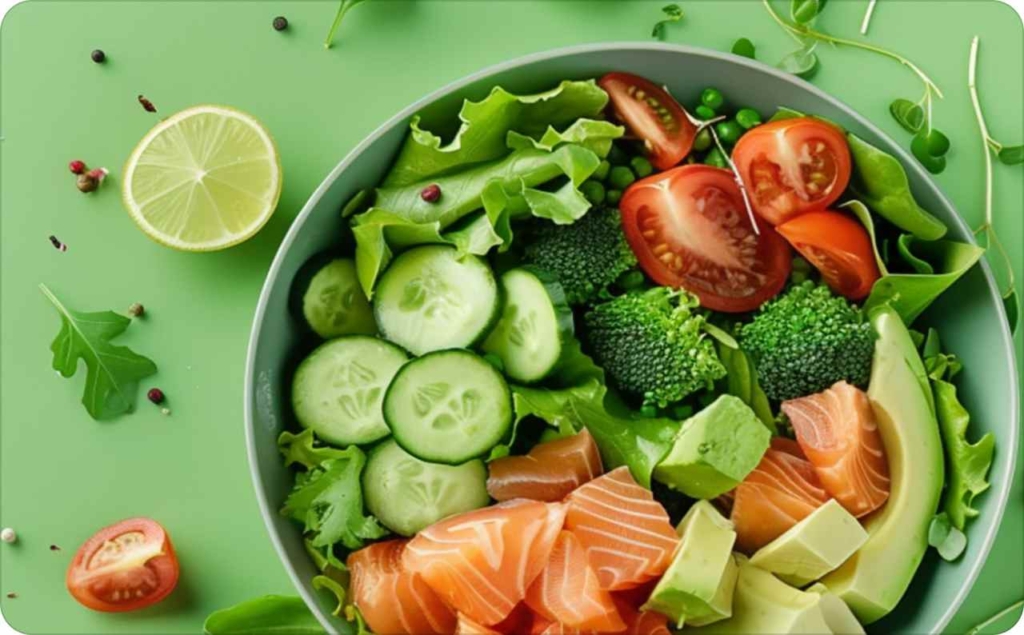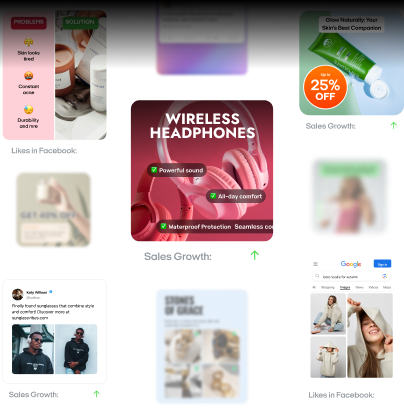Harnessing creativity in AI advertising: 6 best strategies for marketers
Can machines think like marketers? Here are six ways to unlock AI’s creative potential and craft campaigns that inspire and convert.
If you’ve ever run an ad campaign that felt like guesswork, AI in advertising can eliminate the uncertainty. By integrating machine learning, predictive analytics, and generative AI, brands can transform how they design, deliver, and refine ads across multiple platforms.
Instead of basing decisions on gut instinct, these data-driven creative strategies harness real-time insights: user demographics, past performance metrics, and market trends. They can craft messages that resonate with each audience segment.

What’s AI in advertising
At its core, AI in advertising uses algorithms that learn continuously from consumer behavior. These systems spot patterns most people miss, from micro-trends in click-through rates to the optimal time of day for specific offers.
Alongside deep learning and neural networks, marketers increasingly rely on programmatic advertising and predictive analytics to automate everything from ad placements to personalization. According to a Gartner survey, 63% of marketing leaders plan to invest in generative AI in the next 24 months. This rapid shift underscores how quickly machine-driven advertising is becoming the norm.
How it works
First, AI tools absorb historical data. Clicks, conversions, and user demographics can reveal hidden insights.
Next, machine learning models forecast which headlines, visuals, or offers are likely to perform best. For instance, they might discover that a certain product image doubles engagement among college students at lunchtime and automatically serve it to that demographic.
Generative AI then steps in to create variations: headlines, images, or even video snippets. They will help you to run A/B tests simultaneously and scale the top-performing content. This dynamic creative optimization adapts your campaigns on the fly, boosting relevance and ROI.
Why it matters
Traditional advertising often depends on guesswork, leading to wasted spend and inconsistent results. AI in advertising, on the other hand, relies on continual data analysis and quick iteration to improve performance.
Brands that embrace predictive analytics can see 21% higher revenue growth and outpace industry averages by aligning creative strategies with real-world user behavior. Plus, programmatic advertising automates ad buys, freeing your team to focus on strategic planning instead of chasing manual tweaks.
When used responsibly, with respect for consumer privacy and transparency, AI-powered advertising feels both relevant and unobtrusive. This approach fosters deeper audience trust, especially when you blend the precision of machine intelligence with the genuine storytelling that only humans can provide.
By incorporating AI-driven advertising into your marketing mix, you’ll streamline your creative process. The result? More meaningful audience connections and consistent returns on your ad investments.
The evolution of creativity in advertising
Did you know that seven in ten marketers say they’ve improved customer experience after using AI? This stat reveals how creativity in advertising has shifted from one-dimensional print campaigns to highly targeted, AI-enhanced experiences. The history of advertising creativity traces an ongoing advertising transformation, shaped by emerging media channels and new technologies.
In the early 20th century, ad agencies focused on catchy slogans and bold visuals for newspapers and magazines. Later, radio and television gave brands a dynamic new stage to transform creative advertising, competing in originality and elaboration in the “Golden Age” of commercials where memorable jingles and celebrity endorsements ruled.
A different kind of creative evolution
By the late 1990s and early 2000s, the internet sparked a fresh wave of innovation. Marketers moved away from broad demographic assumptions and embraced behavioral targeting to serve relevant messages to niche audiences.
This shift laid the groundwork for modern programmatic advertising, which automates media buying in real time. As campaigns grew more complex, creativity wasn’t just about eye-catching visuals, it relied on responding to user data and context.
AI takes center stage
Today, AI elevates that data-driven approach by fueling dynamic creative optimization and creative automation. Instead of launching one ad and hoping it resonates, brands can use artificial intelligence to generate multiple variations.
These systems analyze metrics, like click-through rates and conversions, and tweak headlines, images, or calls to action on the fly. The result is an iterative process that refines campaigns in real time, boosting relevance and impact.
For example, a mid-sized fashion retailer can test two ad formats or variations on social media: one emphasizing free shipping, the other featuring bold imagery. Within 48 hours, AI-driven optimization can reveal a 15% higher conversion rate for the free-shipping ad among 18-25-year-olds. By adjusting elements on the fly, the brand can capture more sales without wasting budget on underperforming creatives.
Rethinking creative measurement
Historically, advertisers often relied on awards, focus groups, or brand recall surveys to gauge success. Now, AI-powered platforms provide precise data on engagement, sentiment, and audience segmentation.
They deliver tangible insights into the AI impact on advertising creativity. A lot of marketers use AI to analyze trends, customer preferences, and competitor strategies. By layering real-time metrics over human intuition, teams can evolve creative strategies that resonate with consumers in increasingly personalized ways.
Whether you’re looking back at the dawn of television ads or testing the latest algorithm-driven campaign, one thing remains constant: advertisers seek fresh, compelling ways to capture attention.
AI doesn’t replace human ingenuity — it amplifies it. Through this blend of human insight and machine intelligence, creative advertising will keep transforming and adapting — an unstoppable evolution in an industry built on innovation.
AI-driven creative strategies
Ever wonder how AI can help your campaigns stand out even if you’re on a tight budget? According to McKinsey, 78% of companies use AI in at least one business function, yet many small businesses haven’t tapped into creative automation for better ad performance.
Below, we’ll explore AI creative strategies — including predictive analytics, emotional AI, programmatic advertising, and generative AI, so you can produce ads audiences love and see tangible ROI.
Why AI matters for small businesses
Even with limited budgets, AI can amplify your reach and reduce guesswork. By analyzing real-time data, you can identify which messages and visuals resonate most, pause underperforming ads early, and personalize campaigns so each dollar goes further. This makes it easier to compete in crowded markets without a large marketing department.
Harness data-driven personalization
Predictive analytics anticipates which concepts will likely succeed, cutting down on costly trial and error. Instead of guessing, a tool like Sora gathers user behavior, forecasts trends, and flags high-impact ad angles based on past engagement or demographics.
If resources are tight, consider a basic plan, which is around $50-$100 per month, to test a few social ads. For instance, a local bakery can use it to compare a short behind-the-scenes video against a static image and see which one drives more orders.
Connect on a deeper level with emotional AI
While numbers and metrics matter, emotions often guide buying decisions. Emotional AI taps into facial expressions, social feedback, or voice cues to see how your audience really feels about a message.
Tools like ChatGPT or Copy.ai can then draft copy that highlights excitement, nostalgia, or comfort, helping you reflect the emotional tone your customers respond to best. You stay in control of tone and final edits, so your brand voice remains authentic.
Generate ads with AI
Generative AI tools like AI ad generator creates original text, images, or videos at scale, and Zeely AI specializes in turning your product info into polished, ready-to-use static or video ads.
If you have only a few photos or basic descriptions, Zeely AI transforms them into short video clips or display ads tailored for social media.
Always review final outputs to ensure they match your brand identity. AI speeds up ideation, but your judgment keeps it consistent.
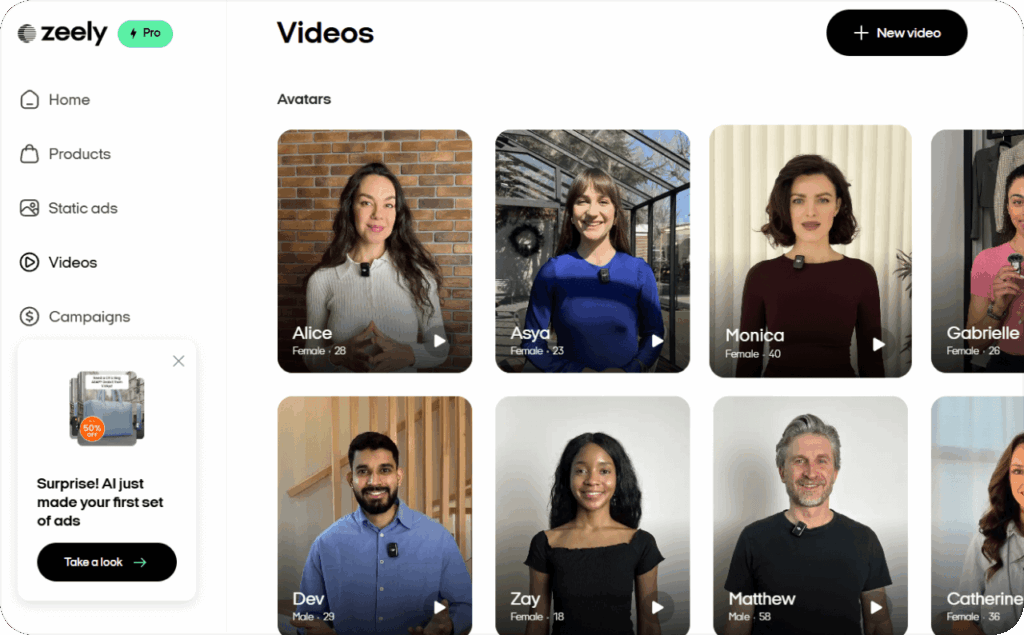
Use programmatic advertising
Once you’ve identified your best angle, programmatic advertising automates when and where your ads appear, ensuring the right people see them at the right moment. Dynamic Creative Optimization refines things even further by testing multiple headlines, visuals, or calls to action, all guided by AI insights.
If you’re new to this, start with a low daily spend, which is around $5-$10, on a programmatic platform. From there, you can compare two CTAs. For example, “Order now for fresh delivery” vs. “Taste our award-winning bread.” A DCO platform rotates visuals and copy, automatically pinpointing which combo delivers the best engagement.
Measure and iterate in real time
Track which AI creative strategies work best by monitoring performance continually. Google Analytics or Adobe Experience Cloud handle click-through and conversion metrics.
Zeely AI helps to identify the key metrics of digital advertising. Test one variable at a time, like a headline or image. Then you can scale the winners, and refine or retire underperformers. Feed these insights back into the next AI marketing campaigns for ongoing improvements.
You’ll refine your ads continuously while keeping your brand top of mind. With each iteration, you edge closer to a winning formula that resonates with your audience and makes every marketing dollar count.
Case studies of successful AI-enhanced campaigns
If you’ve been searching for AI advertising case studies or wondering how to harness AI for creative advertising, these five successful AI campaigns provide powerful examples.
Each one showcases real-world AI applications in advertising, that increased engagement, boosted conversions, or enhanced brand perception. We’ll also see how supporting technologies like OpenAI, Zeely AI, and Adobe Firefly can be used in your own data-driven creative strategies.
Virgin Voyages: Jen AI campaign
Virgin Voyages, a new cruise line, collaborated with Jennifer Lopez’s team to launch Jen AI. Customers crafted personalized trip invitations, only to discover that the JLo persona was actually an AI-generated twist. This playful surprise drove a 35% rise in click-through rates, showcasing the AI-driven advertising results that come from a fun, personalized user experience.

If you manage a local tour or events company, try a simpler approach, like using Zeely AI to quickly produce short, customized ads. Set aside a modest ad budget, then quickly generate a few static and video ads and run your smart AI campaign with Zeely AI automatically setting you the correct audience and improving your campaign by 5-10% over time. Whatever generator you use for text and design, small test-and-learn cycles can pay off.
Lexus: AI-scripted and directed commercial
Lexus allowed artificial intelligence to write and direct a commercial, which is a bold statement for an established automotive brand. By blending consumer sentiment data with a generative model, similar to OpenAI’s GPT architecture, Lexus crafted visually striking, offbeat concepts.
The result was the rise of sales orders for the Lexus ES surpassing targets by 40%, proving that AI marketing success stories can emerge from boundary-pushing campaigns.
For a local boutique or small agency, consider launching a micro-project: a 15-second AI-inspired video ad. You can rely on Adobe Firefly to produce quick visual variations or Zeely AI to generate UGC style videos designed to deliver high impact results, not just a pretty picture.
If the concept resonates, scale your budget and aim for a bigger splash, like a full 30-second spot featuring “AI-directed” elements that underscore your creativity and forward-thinking brand identity.
Harley-Davidson: #FindYourFreedom
Harley-Davidson used machine learning to identify the social topics that mattered most to its riders. Through the #FindYourFreedom campaign, the brand crafted messages that felt personal to both veteran bikers and curious newcomers.
Engagement on social media rose by 50% within six months, and test-ride bookings climbed, signaling the power of data-driven creative strategies for heritage brands.
Even smaller businesses can tap basic social-listening tools or AdCreative.ai for quick audience insights. With as little as $500, you can run a targeted mini-campaign around a unifying hashtag or theme. If you see a 10-20% engagement lift, reinvest in refining your creative assets through generative AI or a local influencer partnership.
Under Armour: Rush campaign
Under Armour turned to the Google Marketing Platform for audience segmentation. By mapping user behavior and demographics, it served AI-personalized ads pushing either a performance or comfort angle.
The campaign generated a great response on social media. Brand engagement increased, especially among the younger audience. This campaign illustrates how to harness AI for creative advertising: match each shopper’s interests to the right product.
If you run a smaller e-commerce site, try a recommendation engine or a “people who liked X also liked Y” feature driven by OpenAI. Even a 5-10% rise in conversions can be a game-changer if you operate with limited staff. Keep your daily social ad spend to $50-$100 while testing different audience segments for each product.
The North Face: AI-powered shopping assistant
The North Face introduced a NLP-based shopping assistant, prompting customers about climate or trip duration, then recommending gear that fit their specific outings.
Within two months, the AI assistant achieved a 60% click-through rate and drove 75% total sales conversions among clients who engaged with it. This successful advertising example underscores how user-friendly AI can streamline the decision-making process.
For small retailers, even a lightweight chatbot like Tidio or a basic OpenAI plugin can handle FAQs without staff intervention, saving time and guiding customers. A single-digit drop in manual Q&A might free your team to focus on order fulfillment or deeper marketing efforts.
Key takeaways
Personalization needn’t break the bank. Even a free or low-cost AI chatbot or recommendation engine can enhance user engagement by tailoring messages. Start small, maybe $50-$200 in social ads, and reinvest if you see a lift in click-through or conversions.
Emulate Lexus by unveiling a unique, AI-driven concept, or harness predictive targeting like Harley-Davidson did to rally your community. Test one variable at a time, like swapping a headline or exploring a new audience. When you see a modest but steady ROI jump, you know you’re on the right track.
By blending human creativity with the precision of machine intelligence, these AI advertising case studies prove you can adapt successful techniques. Each small victory paves the way for larger investments in AI-enhanced advertising, where data backs your boldest ideas for the greatest impact on engagement and sales.
Measuring the effectiveness of AI in advertising
Feeling overwhelmed by the sheer number of tools and metrics to juggle? Don’t worry. In this section, we’ll clear up the confusion around measuring AI advertising success by focusing on key strategies, essential KPIs, and the best tools for real-time performance tracking.
Here’s a table explaining the key methods, metrics, and tools for evaluating the performance of AI-driven creative campaigns:
| Category | Description | Metrics/KPIs | Tools/technologies |
| Engagement | Measures audience interaction with ads | CTR, Engagement rate, conversion rate | Google Analytics, social media insights |
| Cost efficiency | Evaluates the financial effectiveness of ad campaigns | CPC, CPA, CPM | Google Ads, Facebook Ads Manager |
| Return on investment | Assesses campaign profitability | ROI, ROAS | Google Analytics, ad platforms |
| Emotional impact | Analyzes audience emotional responses to ads | Attention, emotional response | Cube AI, Quantilope |
| Incrementality | Measures the causal impact of ads on desired actions | Incremental conversions | Meta’s ASC, Google’s PMAX |
| Real-time analysis | Provides immediate insights for campaign adjustments | Real-time engagement metrics | Google Analytics, Superads |
Zeely AI as all-in-one solution for small business
If you’re wondering how to measure AI advertising success but lack a big marketing budget or staff, Zeely AI offers a direct, app-based approach.
You can create AI-driven ads and track essential advertising effectiveness metrics like CPM, CPC, and conversions. Moreover, you can launch campaigns on Facebook or Instagram in minutes, then review impressions and leads at a glance.
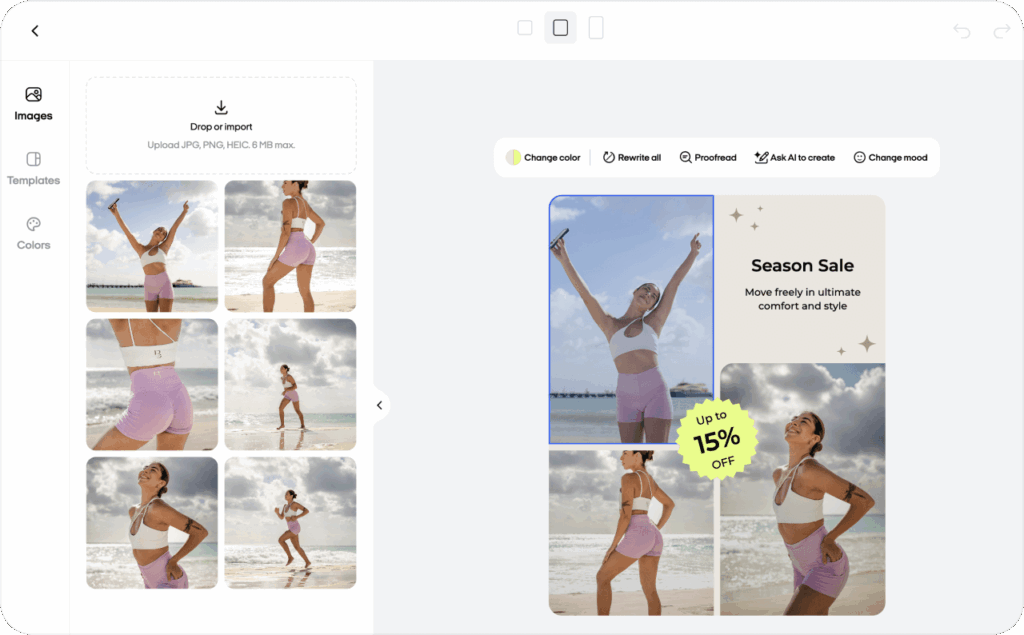
The best part is the agility. Whether you’re at a conference or taking a quick break, Zeely lets you refine headlines or swap visuals if you spot a slump in performance.
Watch your ROI or cost-per-click metrics afterward to see if those tweaks pay off. This mobile-first approach suits small businesses with limited time for ongoing campaign checks.
As an official Meta partner, Zeely also simplifies ad approvals and ensures compliance with Facebook and Instagram rules. There’s a modest 12% service fee, which covers automated ad creation, real-time analytics, and straightforward A/B tests. These features are often out of reach for lean teams.
Conclusion
AI is transforming advertising by making it simpler to test multiple ad variations, deliver personalized content, and spark new creative ideas. Even with AI tools, human creativity and judgment still matter. The best results come from combining AI campaign metrics and advertising effectiveness metrics with genuine storytelling and brand identity.
Think of AI as a partner, not a replacement. Use OpenAI for text generation or Adobe Firefly for quick visuals. Rely on Google Marketing Platform to unify performance data, and turn to Zeely AI if you want an all-in-one, on-the-go solution with advanced features. Each tool handles data and automation, letting you focus on the emotional core of your campaigns.
If you’re new to AI, begin small. You might run an AI-based ad for one segment or test predictive analytics to see which messages lift your CTR or ROI. Apply the insights to refine your next campaign. By doing so, you’ll build a workflow that merges machine intelligence with human creativity.
Ultimately, AI-driven advertising isn’t about removing the human touch. It’s about pairing data-informed personalization with authentic, empathetic storytelling. Whether you’re a small business or a global enterprise, your next wave of success can come from blending what AI does best — speed and scale — with what people do best — imagination and empathy.
Also recommended
